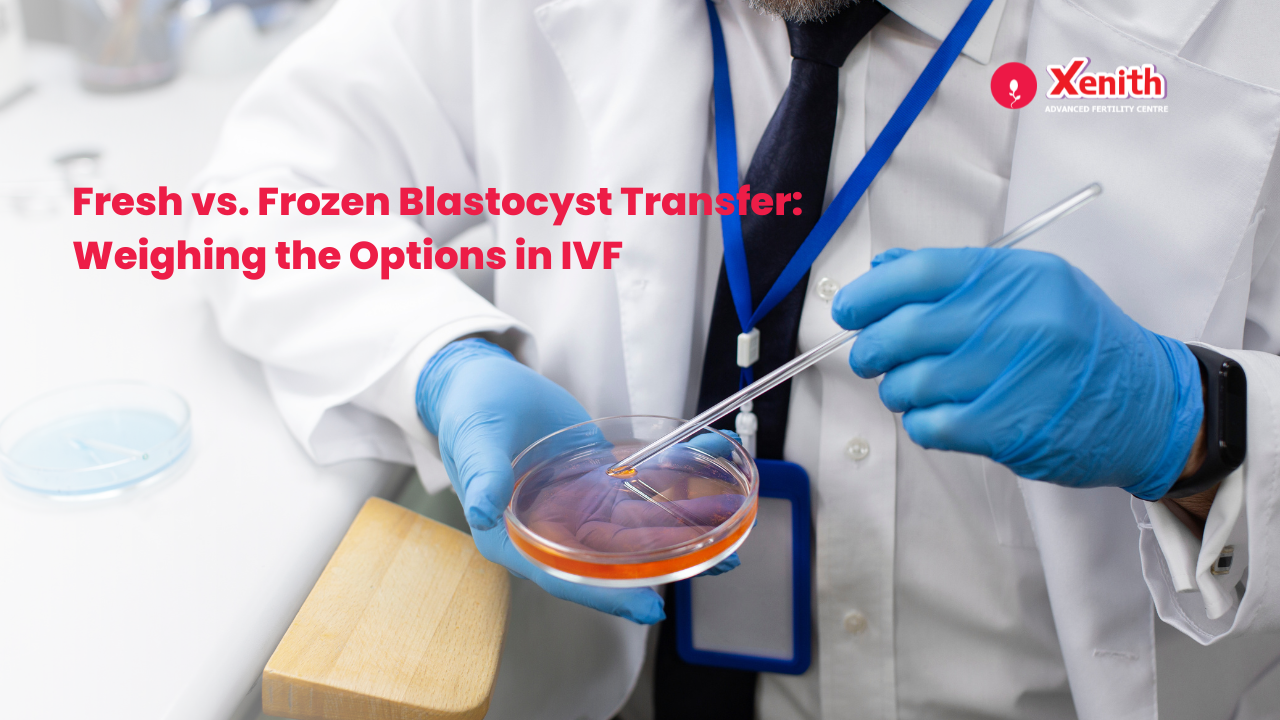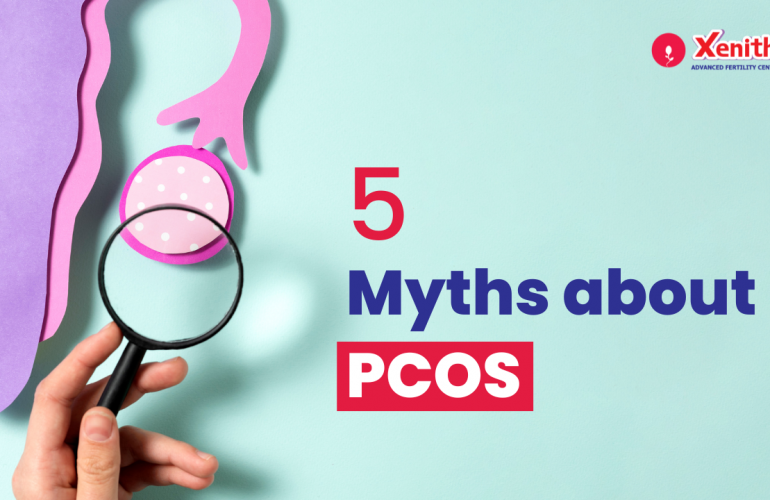Infertility rates are increasing throughout the world and it is defined as the inability to conceive after having regular unprotected sex for a year or more. Invitro fertilization (IVF) is one of the procedures used to help infertile couples conceive where a woman’s ovaries are stimulated by medications to mature more than one egg at a time and when these eggs have matured, they are retrieved from the ovaries and fertilized with sperm in a laboratory setting. Once the egg is fertilized by the sperm, it begins dividing rapidly and a blastocyst is formed after 5 to 6 days of fertilization. This is then transferred back into the woman’s uterus for implantation, which if successful leads to pregnancy
When this newly formed blastocyst is transferred back into the uterus for implantation, it is called a fresh blastocyst transfer or otherwise, it can be frozen, stored and then thawed at a later time when needed. Also, if there are extra embryos leftover after fresh embryo transfer, it could be frozen for future use. But is there a difference in the efficacy of using a fresh blastocyst versus a frozen blastocyst?
Advantages of fresh blastocyst transfer
Fresh embryo transfer takes less time to achieve conception because after 5 to 6 days of egg retrieval, the blastocyst is introduced back into the uterus within that one treatment cycle. This is helpful for patients who have travelled from far away for treatment. Frozen embryo transfers generally require two treatment cycles, one to retrieve the eggs and produce the embryos and the other to prepare the endometrium for implantation. So, frozen transfers will happen at least a month after the embryo is produced or it can happen much later than that depending on the patient’s preference and health. A fresh embryo transfer is also often cheaper because it is all done in one round of IVF cycle and so only one round of medications is needed, whereas in frozen transfer, two medicated cycles will be needed. Frozen transfer might also have other additional costs like the cost for preserving and monitoring the embryo while it is frozen as well as the cost of thawing the embryo in a precise manner so as not to damage it. So, in general a fresh transfer is much more simple.
Challenges and considerations with fresh transfer
Fresh transfers are very dependent on precise timing and synchronization with the menstrual cycle. There is a short window of time when the uterine lining or endometrium is receptive to the blastocyst and so the retrieved eggs need to be fertilized and cultured into a blastocyst and transferred back into the uterus at the time when the endometrium is receptive to it so that successful implantation can occur. Another challenge is that due to the various medications that are taken to stimulate the ovaries, it may lead to hormonal imbalances or cause ovarian hyperstimulation syndrome (OHSS). OHSS could cause painful swelling of the ovaries, fluid build-up and pain in the abdominal cavity, high risk of blood clots, sudden weight gain, decreased blood supply to organs like kidney and liver and could sometimes be life threatening. These could also lead to failure of implantation.
Introduction to frozen blastocyst transfer
A frozen blastocyst transfer takes place when the frozen embryo from the previous IVF procedure is thawed in a precise manner by an experienced embryologist and transferred to the woman’s uterus which has been prepared for implantation. Endometrial priming is when the woman is given hormonal medications to artificially prepare the endometrium for implantation. This will involve getting bloodwork done and monitoring the uterus via ultrasound to make sure the endometrium is of the proper thickness and properly developed to be receptive to the embryo.
Advantages of frozen blastocyst transfer
Frozen blastocyst transfer gives the couple flexibility to choose when they would like to try to conceive and thus also preserve their fertility. Going through IVF can sometimes be stressful both mentally and physically due to the uncertainties of the procedure itself as well hormonal medications and injections and the various ultrasound scans. This stress could, in turn, decrease the chance of conception. So, it might be better to get a physical and emotional break after egg retrieval before trying to conceive.
Preimplantation Genetic Testing (PGT) is a test done to check for any genetic disorders in the embryo before it is transferred to the uterus for implantation. So, PGT could help you pick the healthiest embryo for implantation and frozen transfers could give you the time required to run this test.
There are higher chances of OHSS occurring in some women who have high antimullerian hormone which is secreted in the ovaries and also in women suffering from polycystic ovary syndrome (PCOS) which is a hormonal problem that could cause irregular menstrual cycles, many cysts or fluid filled sacs in the ovaries, and/or high levels of a male hormone. So, to lower the risk of hyperstimulation, the blastocyst is frozen and then thawed and transferred into the woman’s uterus at a later time when the woman’s body has recovered and the uterine environment is more favourable for implantation.
The hormonal levels or the endometrial thickness in certain cases are not conducive to e fresh embry transfer. In such cases it is better to opt for Frozen embryo transfers.
Overcoming challenges with frozen transfer
Sometimes, it’s harder for the embryo to survive the freezing and thawing process although because of better technology and expertise, most embryos do survive this process. There is also a slightly higher risk of the baby being born with larger weight and an increased risk in the mother of hypertension or high blood pressure and postpartum haemorrhage or bleeding after delivery for frozen transfers (3).
So try to have a healthy lifestyle by trying to eat a healthy balanced diet, getting enough sleep, avoiding junk food, alcohol and caffeine, getting regular exercise and learn how to reduce stress in your life by learning to meditate and having positive thoughts. It might also help to talk to a close friend, family, or a counsellor about any anxiety you might be experiencing.
Success rates: Fresh vs frozen
When IVF treatment was first introduced, fresh embryo transfers were more successful than frozen transfers. Since then, the freezing and thawing process has improved a lot and the preparation of the endometrium for implantation as well as the medications administered have also improved. Presently, there are conflicting results from various studies of fresh vs frozen transfer. The success rates for fresh vs frozen is almost the same or in some cases, the frozen transfers have slightly better live birth rates. One study found that frozen transfers did not produce higher pregnancy or live birth rate (1) and other study found that it is slightly higher among patients from whom more than 10 eggs were retrieved (2), among patients with previous implantation failures, among patients with PCOS or have a higher risk of OHSS(3). Success rates for either fresh or frozen depends on several other variables like patient age, health, cause of infertility, and quality/count of egg and sperm. There are certain instances when fresh transfer is likely to give better success rates or when there seems to be no detriment in doing a fresh transfer, then cumulative pregnancy rates can be increased by doing a fresh followed by frozen transfer if needed. It is very important for the clinician to take all parameters into consideration and make a decision as it could make all the difference. At Xenith individualized treatment plans are made for each patient to enhance the chance of pregnancy in the shortest time possible. Each individual is unique dealing with various health issues, genetic predispositions and reactions to various medications. Taking all these factors into account, the doctor will need to determine whether fresh or frozen transfer would be best for that particular individual. If you have questions about what is best for you, come talk to our experts at Xenith Advanced Fertility Centre.




